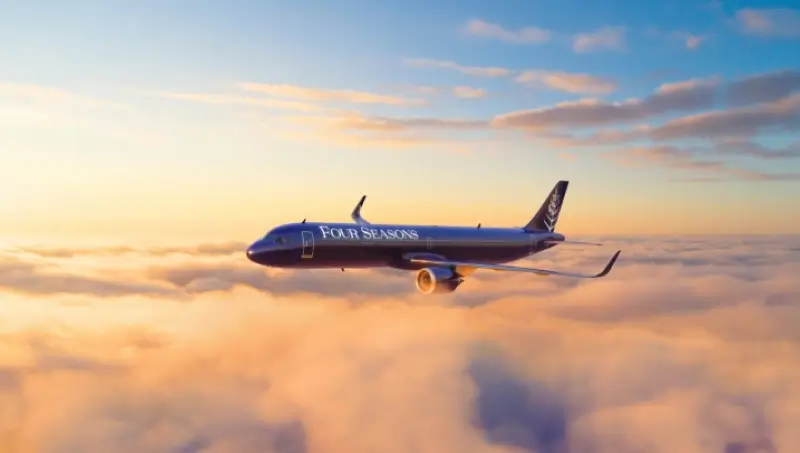
Crosswind landings and go-arounds in Dusseldorf
Apr 06, 2015

Crosswind landings at Düsseldorf Airport can be challenging due to prevailing winds, particularly during the autumn and winter months. Pilots must employ precise techniques to maintain control while aligning with the runway, often utilizing a crab approach or sideslip method to counteract lateral drift. Go-arounds may be necessary if conditions are unfavorable or if a stable landing cannot be assured, prompting pilots to execute a missed approach and circle back for another attempt. The airport's layout and surrounding terrain also influence these maneuvers, making proficiency in handling crosswinds crucial for ensuring safety and operational efficiency.
When it comes to aviation, understanding the intricacies of "crosswind landings" and "go-arounds" is crucial, especially in busy airports like Düsseldorf International Airport (DUS). The unique weather conditions and the layout of the airport runways often necessitate pilots to employ specific techniques to ensure a safe landing. This article delves into these techniques, providing insight into the challenges faced by pilots and how they navigate these situations effectively.
Understanding Crosswind Landings
"Crosswind landings" occur when the wind blows perpendicular to the runway, creating a challenging scenario for pilots. Düsseldorf Airport, being situated in a region prone to changing wind patterns, often experiences crosswinds. Pilots must use their skills to maintain control of the aircraft while aligning it with the runway. The key to a successful crosswind landing lies in the technique known as the "crab method", where the aircraft is angled into the wind during approach to counteract the drift caused by the wind.
The following table outlines the critical aspects of executing a crosswind landing:
| Step | Description |
|---|---|
| 1 | Approach with a crab angle to counteract wind drift. |
| 2 | Align the aircraft with the runway just before touchdown. |
| 3 | Use ailerons and rudder to maintain control and stability. |
| 4 | Touch down with one main wheel first, followed by the other. |
Challenges of Crosswind Landings in Düsseldorf
Düsseldorf's geographical location often means that pilots encounter varying wind directions and speeds. The airport's runways, primarily oriented in the north-south direction, can lead to significant crosswind conditions during takeoff and landing. This variability necessitates pilots to be well-prepared and adaptable, as they may need to adjust their approach based on real-time weather updates.
Moreover, the airport's traffic density can complicate matters. With multiple aircraft attempting to land and take off simultaneously, pilots must communicate effectively with air traffic control (ATC) to ensure safe operations. This coordination is particularly vital during adverse weather conditions, where visibility may be compromised, and wind speeds may fluctuate.
The Go-Around Procedure
Sometimes, despite a pilot's best efforts, a landing cannot be completed safely. This is where the "go-around" procedure comes into play. A "go-around" is executed when a pilot decides to abort the landing attempt and circle back for another approach. This decision can be prompted by several factors, including unstable approach conditions, runway obstructions, or poor visibility.
The go-around process is critical for maintaining safety and involves several key steps, as detailed in the following table:
| Step | Description |
|---|---|
| 1 | Throttle up to full power and maintain climb attitude. |
| 2 | Retract landing gear and flaps as appropriate. |
| 3 | Communicate intentions to ATC and follow their instructions. |
| 4 | Establish a safe climb and prepare for another approach. |
Training for Crosswind Landings and Go-Arounds
Due to the complexities involved in crosswind landings and go-arounds, pilot training is vital. Flight schools often put a significant emphasis on these maneuvers, utilizing simulators and real-world flying experiences to prepare students. In Düsseldorf, pilots learn to analyze weather conditions and adapt their flying techniques accordingly, ensuring they are well-equipped to handle the challenges posed by the airport's operational environment.
Moreover, ongoing training and proficiency checks are essential for seasoned pilots. Weather patterns can change rapidly, and staying current with techniques and regulations ensures that pilots can maintain safety standards. Many airlines operating at Düsseldorf International Airport have established recurrent training programs that focus specifically on these critical maneuvers.
Conclusion
"Crosswind landings" and "go-arounds" are indispensable aspects of aviation, particularly at airports like Düsseldorf. Understanding these maneuvers not only enhances pilot safety but also contributes to the overall efficiency of airport operations. As weather conditions continue to evolve, pilots must remain vigilant and adaptable, ensuring they can navigate the challenges posed by crosswind scenarios effectively. By honing their skills through rigorous training and real-time experience, pilots can confidently manage the complexities of landing and go-arounds, ultimately ensuring the safety of passengers and crew alike.
Related Articles

Explore Thailand: The Best Islands to Visit for Paradise, Adventure, and Relaxation

The Ultimate Guide to the Best Islands in Thailand for Your Next Getaway

Do babies need passports? How to get a passport for a newborn

How to get a U.S. passport fast: here’s how to expedite the process

What is Mobile Passport Control: 5 reasons why you should use it

SENTRI vs. Global Entry: A detailed guide

Do you need a passport to go to the Bahamas? Let’s find out

Do you need a passport to go to Mexico? A detailed guide

Do you need a passport to go to Canada? We got the answer

Do You Need a Passport for a Cruise: An Essential Travel Guide

Booster Seat Requirements: All the Rules to Follow in Your Rental Car

What Are the World’s Most Powerful Passports, and How Does Yours Rank?

How to Take a Passport Photo at Home: A Helpful Guide

You've got to have heart! Southwest's new livery

Your opinion: Should water be free on low cost carriers?

Young women bolder than guys as solo travellers
